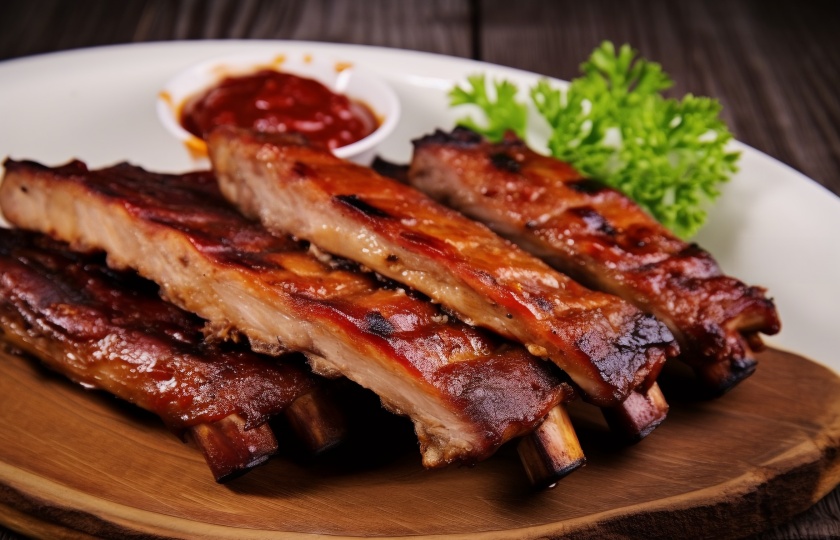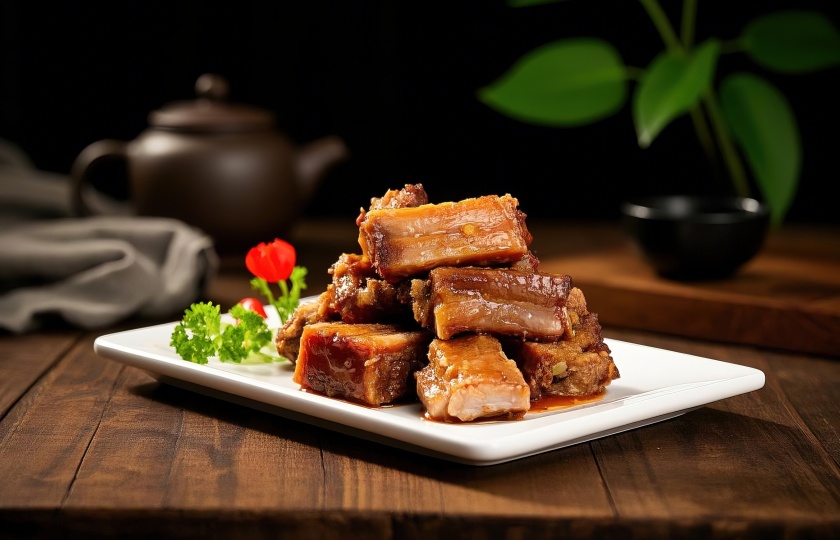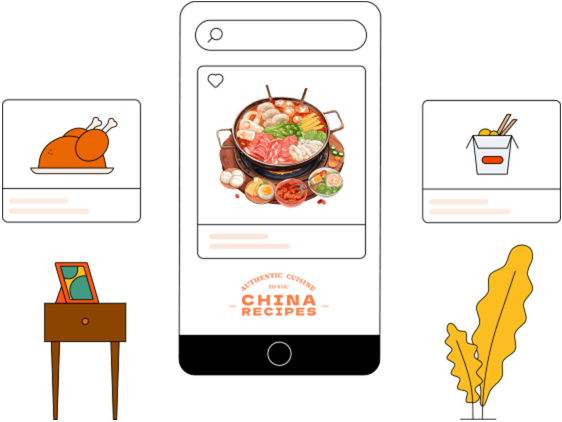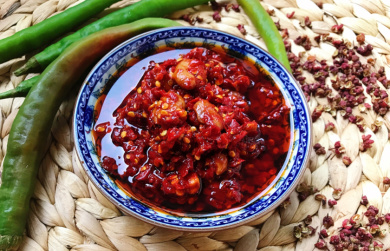Easy Guide: How To Reheat Ribs In Air Fryer

Air fryer reheating is quick and delicious, but technique matters. Learn these practical tips.
What is the best way to reheat leftover ribs?
Don't put the ribs directly into the air fryer after taking them out of the refrigerator. Gently brush a thin layer of oil on the surface or spray a little water, so that the meat won't become dry and tough easily.
Lay the ribs flat in the fry basket without stacking them, otherwise they won't be heated evenly. Set the temperature to 180 degrees Celsius. After heating for 5 minutes, pull out the basket and check. If the edges are already a bit crispy, turn the ribs over.
At this time, you can spray water again and continue to heat for 3 more minutes. If the ribs are relatively thick or have a lot of sauce, loosely wrap the bottom with aluminum foil to prevent the sauce from burning.
After heating is complete, don't eat the ribs right away. Turn off the power and let the ribs stay in the fry basket for 1 minute. The residual heat can make the inside softer.
Remember that the heating power varies among different brands of air fryers. It's best to check the status every 2 minutes when trying it for the first time. I personally prefer the method of high - temperature and quick heating. However, for sweet ribs like honey - glazed ribs, it is recommended to warm them slowly at 160 degrees Celsius to prevent the sugar from caramelizing and becoming bitter.
Do I need to thaw ribs before reheating in air fryer?
You don't need to thaw the ribs completely, but it's best to take them out of the freezer half an hour in advance to let the surface soften slightly. If you put them in directly when you're short on time, the heating time will be prolonged, and the outer layer is likely to become burnt and hard while the center may not be warm enough. In my experience, the semi - thawed state is the easiest to handle.
If heating directly from the frozen state, first preheat at 160 degrees Celsius for 3 minutes. Spray some water on the surface of the ribs or wrap them in a thin layer of oilpaper. Then set the temperature to 170 degrees Celsius and heat for 8 minutes. Flip the ribs over once during this time and uncover the oilpaper to check the internal temperature. If there are still ice crystals inside, you can add another 3 minutes, but pay attention to the color change of the outer layer.
Frozen ribs with sauce are more troublesome. It is recommended to thaw them until you can separate each rib.

How to prevent ribs from drying out in the air fryer?
Spray water or brush oil
Spray a small amount of water on the surface of the ribs before heating, or use a pastry brush to apply a thin layer of oil. For ribs with sauce, you can directly smear them with the remaining sauce, but reduce the amount of sauce with a high sugar content to avoid excessive caramelization.
Wrapping method for heating
First, wrap the ribs completely with aluminum foil and heat at 160 degrees Celsius for 6 minutes to allow the inside to warm up thoroughly. Then unwrap the aluminum foil and adjust the temperature to 180 degrees Celsius and heat for 2 - 3 minutes. This way, you can restore the crispy skin without losing the meat juice.
Control the quantity each time
Do not put more than half of the fry basket's capacity of ribs at one time. Leave some space between the ribs. If there is too much stacking, the hot air circulation will not be smooth, resulting in uneven heating, and the edges are prone to becoming dry and hard.
If the ribs are mainly lean meat, you can quickly brush a layer of apple cider vinegar or diluted honey water during the heating process (when unwrapping the aluminum foil). The acidic substance can soften the fibers, and the sweetener can help form a shiny protective layer on the surface.
Are ribs better in an air fryer or an oven?
I've tried both, and here's what I've found: The air fryer is suitable for handling single servings of ribs, especially for reheating leftovers. But if it's a whole slab of frozen and unthawed ribs, I would use the oven and bake them at 180 degrees Celsius with a cover for 20 minutes, which is more reliable.
Situations where the air fryer is the preferred choice:
When you're short on time or dealing with a small quantity, the air fryer can restore the crispness in 5 - 8 minutes, while the oven requires at least 15 minutes for preheating.
For ribs with a crispy skin or a batter coating (such as sweet and sour ribs), the hot air circulation in the air fryer can better maintain the fluffiness of the outer shell compared to the static heating in the oven.
For single - person or two - person servings, the capacity of the air fryer's fry basket is just right, avoiding heat waste in the large oven space.
Situations where the oven is more suitable:
When heating more than 500 grams of ribs at the same time, laying them flat on a baking tray in the oven can result in more even heating.
For thick - boned and meaty parts (such as an entire pork rib slab), the gentle heating in the oven can thoroughly warm the center without over - browning the outside while leaving the inside raw.
If you want to maintain the moistness of the sauce: Lining the baking tray with aluminum foil and covering it with baking paper in the oven creates a semi - steaming and baking effect, which is suitable for honey - based ribs.

What are other methods to reheat leftover ribs?
Besides using an air fryer, there are five common methods to reheat leftover ribs, recommended in order of effectiveness:
Reviving crispness by pan - frying
This method is most suitable for deep - fried ribs with a crispy skin. Preheat the pan over medium heat. Fry the ribs for 1 minute on each side, then turn to low heat and cover the pan for 2 minutes. During this process, pour half a spoonful of water along the edge of the pan to create steam. This not only makes the meat soften faster but also prevents the bottom from burning.
Moisturizing in a steamer
Steaming is a better option for sauced ribs or marinated ribs. After the water in the steamer boils, place the ribs on a plate, cover the surface with a damp gauze or baking paper, and steam over medium heat for 6 minutes. Take them out immediately after steaming to avoid the outer layer getting softened by water vapor.
Microwave - accelerated version
This method can be used when you're short on time, but you must use a damp paper towel. Spread the ribs flat on a plate, cover them with a damp kitchen paper towel, heat on high for 1 minute, then pause and turn the ribs over and heat for another 30 seconds. Arrange the parts with bones facing outwards.
Oven warming at low temperature
This is suitable for a large quantity of ribs or an entire slab of ribs. Line a baking tray with aluminum foil, place the ribs on it and cover with a second layer of aluminum foil, leaving a gap at the edges. Bake at 150 degrees Celsius for 12 - 15 minutes. Uncover the upper layer of aluminum foil in the last 3 minutes to let the surface dry.
Hot water soaking method
This method is for ribs that have become completely dry and tough: Put the ribs in a sealed bag, expel the air, and soak them in hot water at 65 - 75 degrees Celsius for 20 minutes. This method makes the meat the tenderest, but the crispy skin will disappear. It's suitable for further processing later, such as shredding for fried rice.
How to know when reheated ribs are done in air fryer?
Insert a food thermometer into the thickest part of the meat, making sure to avoid the bone. When the temperature reaches above 74 degrees Celsius, it is considered safe. If you don't have a thermometer, break apart the middle of the rib. If the meat fibers can be easily separated and there is no cold feeling, it indicates that the rib is thoroughly heated.
For ribs with sauce, fine oil bubbles will appear on the surface, and the sauce will become thick again. The edges of lean - only ribs will contract slightly. When you poke them with a chopstick, you should feel elasticity instead of excessive hardness.
If there is connective tissue at the joint of the bone and meat, it should turn into a semi - transparent, gelatinous state after heating. The cartilage part should become soft enough to be pierced with a chopstick, but if it becomes completely mushy, it means it has been overheated.























